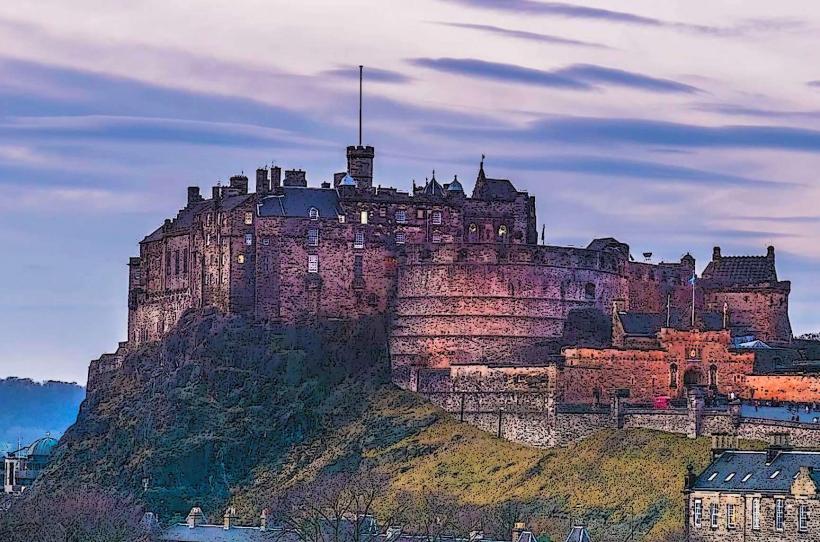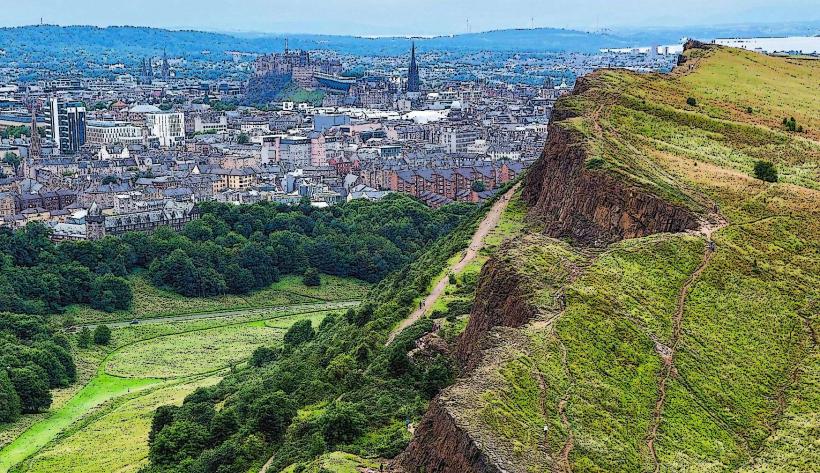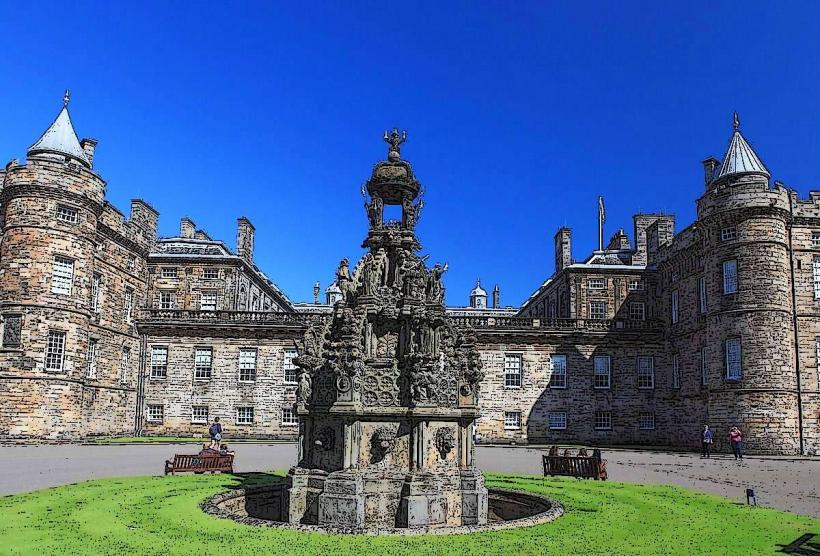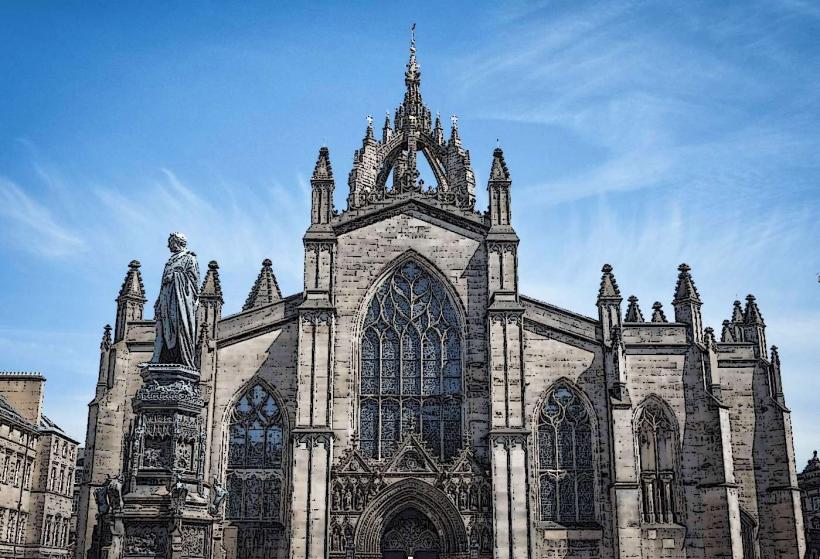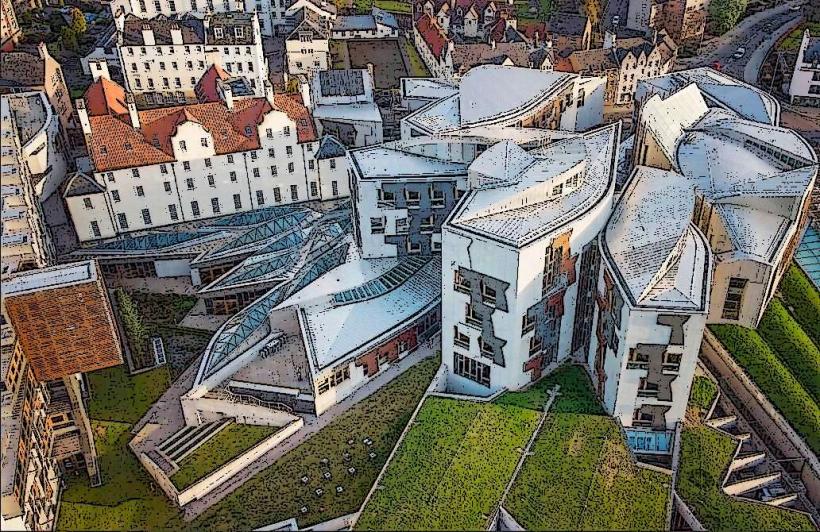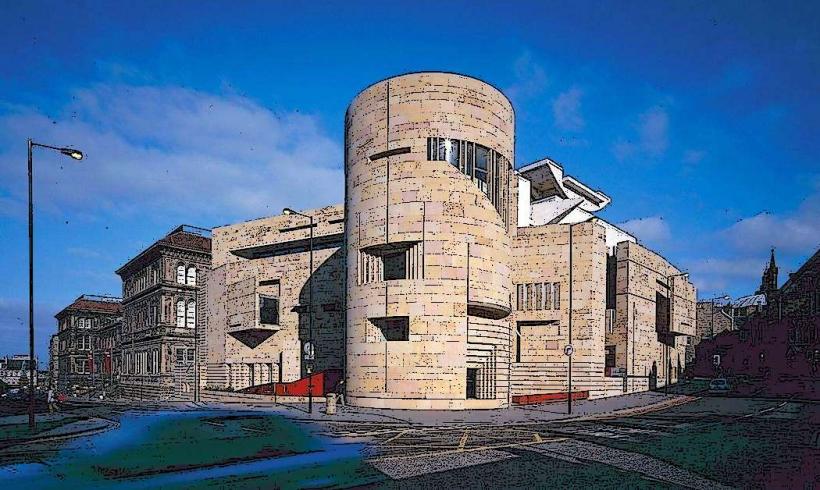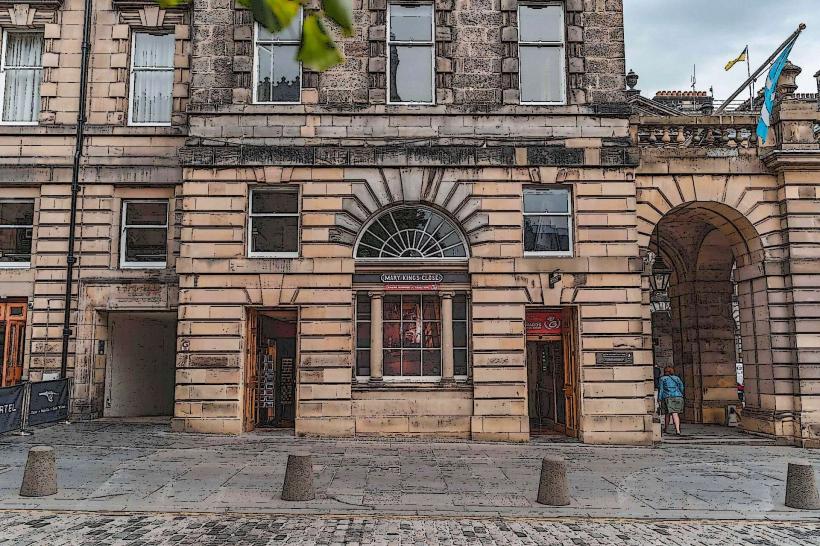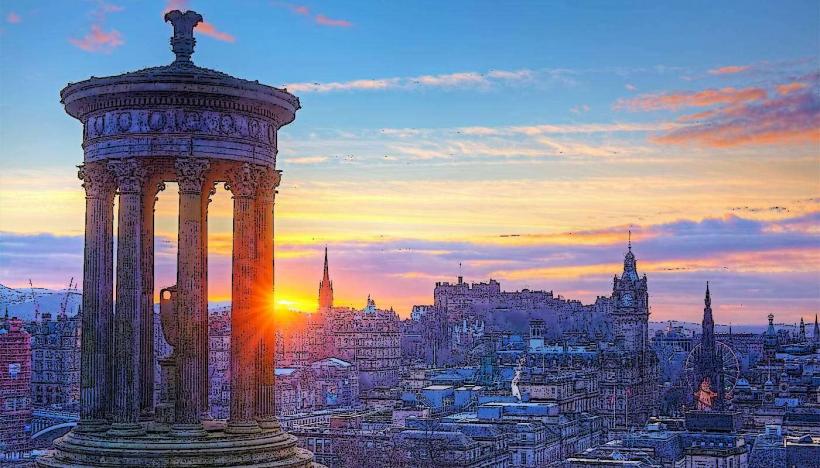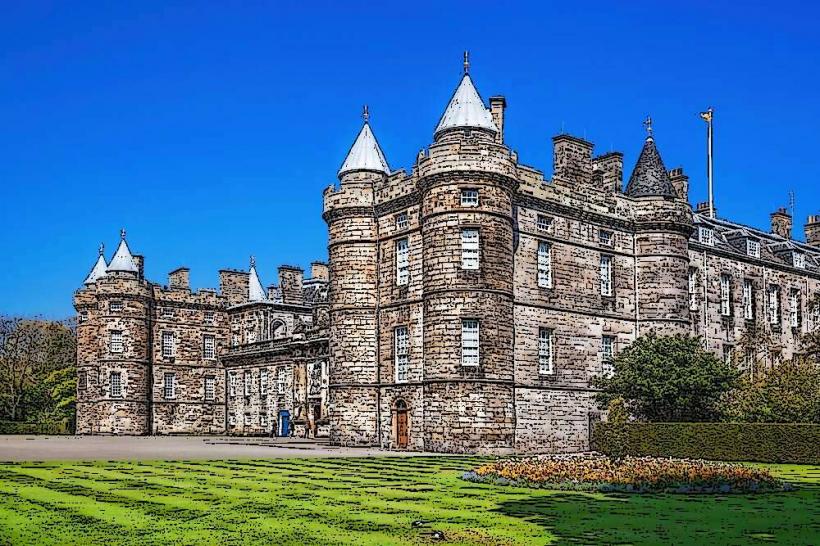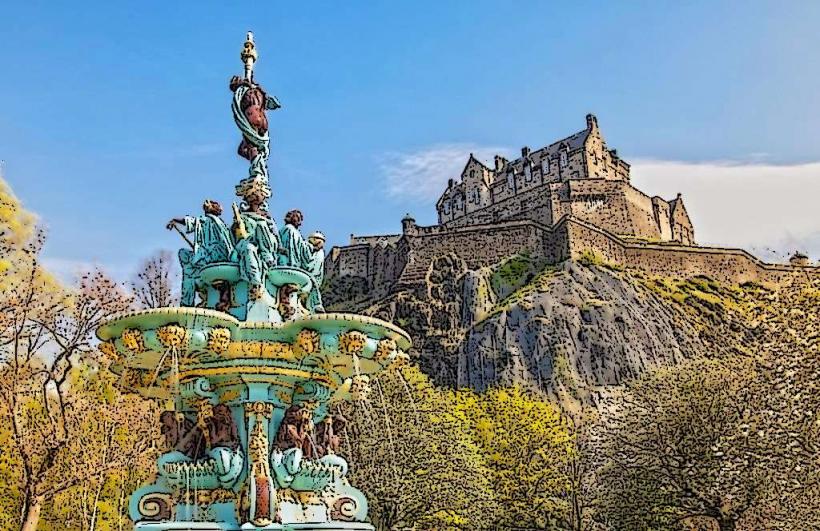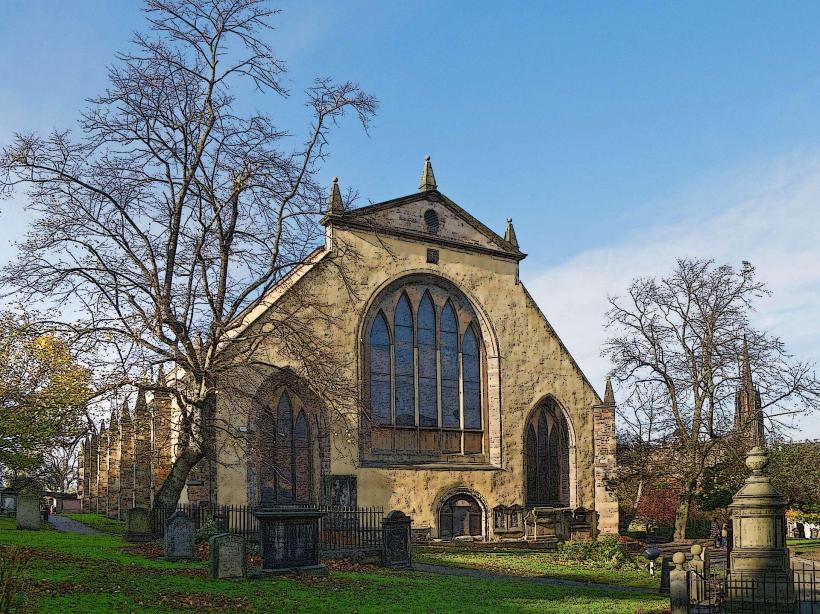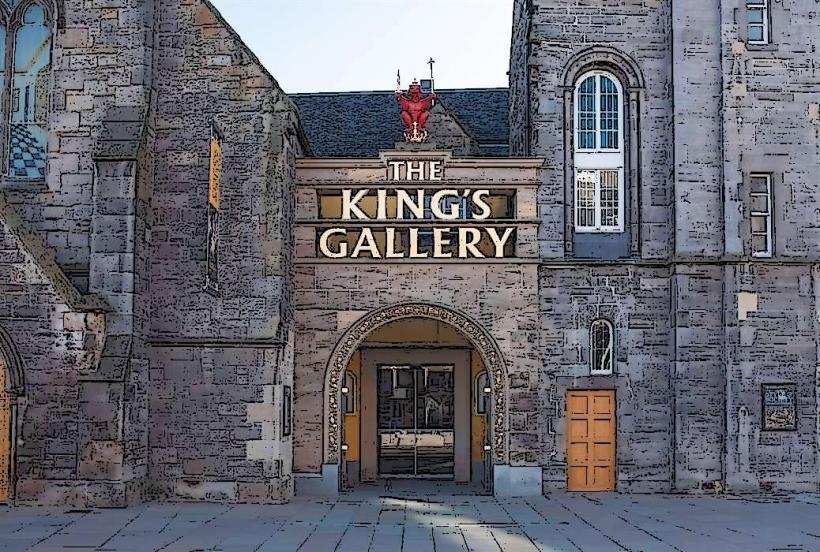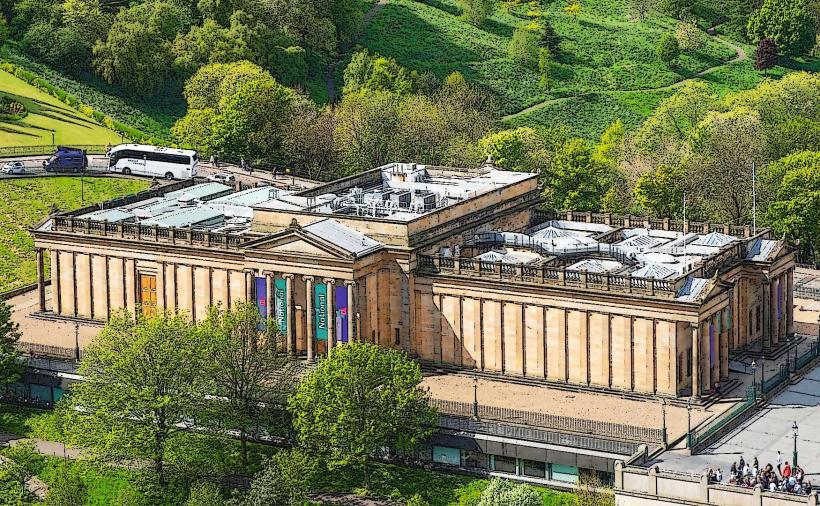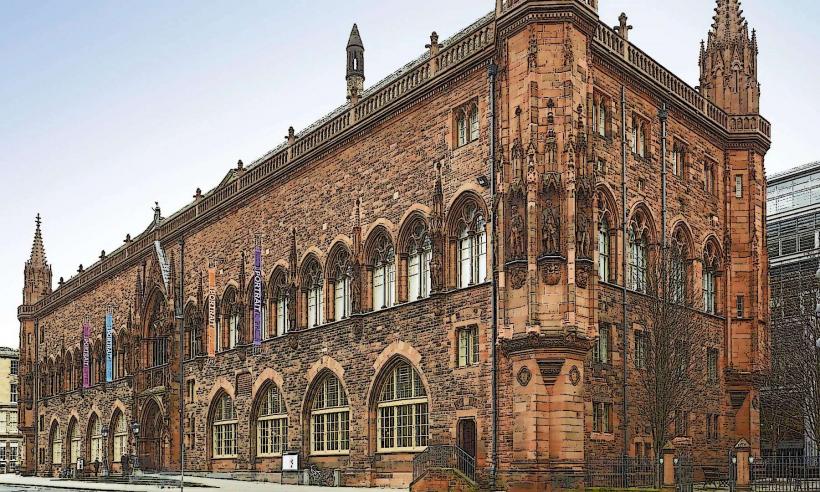Information
Landmark: Royal MileCity: Edinburgh
Country: United Kingdom
Continent: Europe
The Royal Mile is one of Edinburgh’s most famous and historic streets, stretching from the Edinburgh Castle at the top of the city to the Palace of Holyroodhouse at the bottom. The Royal Mile is a vital artery of Edinburgh's Old Town and serves as a primary thoroughfare that connects these two key landmarks. It is rich in history, culture, and tradition, and it offers visitors a fascinating journey through the heart of Edinburgh.
Overview and Name
The Royal Mile is a mile-long (1.6 km) street, but its exact length can vary slightly depending on how it is measured. The street follows a slightly downhill slope from the Edinburgh Castle at its western end to Holyrood Palace at its eastern end, passing through some of Edinburgh's most iconic sites along the way.
The name "Royal Mile" reflects the street’s historical importance as a route used by royalty and for royal ceremonies. It is also referred to in Scots as the "High Street," though the entire stretch of road encompasses several distinct sections, each with its own character.
Key Sections and Landmarks
Castlehill (Edinburgh Castle to the Lawnmarket)
- The western end of the Royal Mile begins at Edinburgh Castle, a majestic fortress that dominates the skyline of Edinburgh. From the castle, the Royal Mile descends through Castlehill, a bustling area where visitors can find a variety of shops, cafés, and tourist attractions.
- The Edinburgh Castle itself is one of Scotland's most important historical sites, housing the Crown Jewels of Scotland and the Stone of Destiny.
Lawnmarket
- As the Royal Mile continues eastward, it enters the Lawnmarket, a historic area filled with medieval buildings and narrow closes (alleys). This part of the Mile was once the site of a market where cloth, especially lawn (a type of fine linen), was sold. It is home to some of the city’s most iconic buildings, including St. Giles' Cathedral.
- St. Giles' Cathedral, also known as the High Kirk of Edinburgh, is a stunning example of Gothic architecture and a significant religious site. It is famous for its Thistle Chapel, which houses the order of the Order of the Thistle, the highest honor that can be given by the British monarch in Scotland.
The Tron and the High Street
- Continuing along the Mile, you’ll pass the area known as The Tron, where a mercat cross (a symbol of the town) once stood. Today, the Tron Kirk stands as a notable landmark. This area is a lively part of the Mile with pubs, restaurants, and shops.
- The central part of the Royal Mile is referred to as the High Street, a bustling area that is always teeming with tourists, street performers, and local residents. This area also features a wealth of historic buildings, including the Tolbooth, which historically served as a prison and court.
Canongate
- The eastern end of the Royal Mile is called the Canongate, which was historically home to the Canons of Holyrood Abbey. This section of the Royal Mile is quieter and more residential than the others, though it still boasts many significant attractions.
- One of the most famous buildings in this area is the Palace of Holyroodhouse, the official Scottish residence of the British monarch. The palace is a popular site for tourists, offering a glimpse into royal life with its lavish interiors and beautiful gardens.
- Holyrood Abbey, founded in 1128, stands as a historic ruin at the base of the Royal Mile, adjacent to the palace. The abbey is a striking site with its medieval architecture, and it was the place where many Scottish monarchs, including Mary, Queen of Scots, were crowned and buried.
Closes and Wynds
- One of the distinctive features of the Royal Mile is the many closes and wynds (narrow alleyways) that run off the main street. These often cobbled alleys, many of which were once private spaces for residents, provide a glimpse into Edinburgh's medieval past.
- Some of the most famous closes include Mary King's Close, a hidden underground street where visitors can take guided tours to learn about life in Edinburgh centuries ago. The Fleshmarket Close and Milne's Court are also worth mentioning, each with its own historical significance.
- These narrow alleys lead to hidden gems like traditional courtyards, gardens, and historical buildings that many tourists might miss if they only stick to the main thoroughfare.
Historic Significance and Culture
The Royal Mile and the Royal Procession
- Historically, the Royal Mile was the route for royal processions, including the Coronation of Scottish Kings and the arrival of monarchs into the city. The Royal Mile continues to serve as the route for the annual Royal Edinburgh Military Tattoo and other official ceremonies.
- The street has been the backdrop for numerous historical events, including royal celebrations, public executions, and parades.
The Edinburgh Festival
- Today, the Royal Mile is a vibrant part of the city’s cultural life, especially during the Edinburgh Festival, the world’s largest arts festival. The Royal Mile becomes a hub for performers, actors, musicians, and street artists who perform throughout the festival season. During this time, the street is filled with crowds of tourists, artists, and locals enjoying the performances, market stalls, and activities.
The Mile as a Symbol of Edinburgh's Heritage
- The Royal Mile is deeply symbolic of Edinburgh’s heritage. As the historic heart of the city, it reflects the city's rich cultural, political, and royal history. The street showcases a mix of architectural styles, ranging from medieval buildings to Georgian townhouses, each telling a story of the city’s past.
Notable Attractions Along the Royal Mile
The Scotch Whisky Experience:
- Located near the castle, this visitor attraction offers an interactive and educational experience about Scotland’s national drink, whisky. Guests can enjoy guided tours, tastings, and learn about the distilling process.
The Writers' Museum:
- Situated in the Lawnmarket, this museum celebrates the lives and works of Scotland’s greatest literary figures, including Robert Burns, Sir Walter Scott, and Robert Louis Stevenson. The museum holds an extensive collection of manuscripts, portraits, and memorabilia related to these iconic authors.
The Real Mary King's Close:
- One of the most famous and eerie attractions along the Royal Mile, Mary King's Close offers an underground tour of a preserved street that dates back to the 16th century. Visitors learn about the history of this forgotten part of Edinburgh, including its use during the plague and its status as a bustling community.
The Scottish Parliament:
- Although slightly off the Royal Mile itself, the Scottish Parliament building is located at the eastern end of the Mile near Holyrood Palace. The modern and often controversial design of the Parliament building contrasts with the historical buildings on the Royal Mile, but it plays a central role in Scotland's government.
Shopping, Dining, and Souvenirs
- The Royal Mile is also a vibrant shopping destination, with many stores selling Scottish souvenirs such as kilts, cashmere, tartan scarves, and whisky. You can find shops selling traditional Scottish products like shortbread, tweeds, and handmade jewelry.
- The Mile is lined with pubs and restaurants, where visitors can enjoy traditional Scottish dishes, including haggis, fish and chips, and whisky tastings.
Conclusion
The Royal Mile is much more than just a street in Edinburgh; it is a living, breathing piece of history that reflects the cultural and political heart of Scotland. From its medieval origins to its role as a major tourist destination, the Royal Mile offers a unique blend of history, culture, and modern vibrancy. Whether you’re exploring the narrow closes, visiting historic landmarks, or simply enjoying a leisurely walk down the Mile, you’ll find a wealth of experiences waiting to be discovered.

